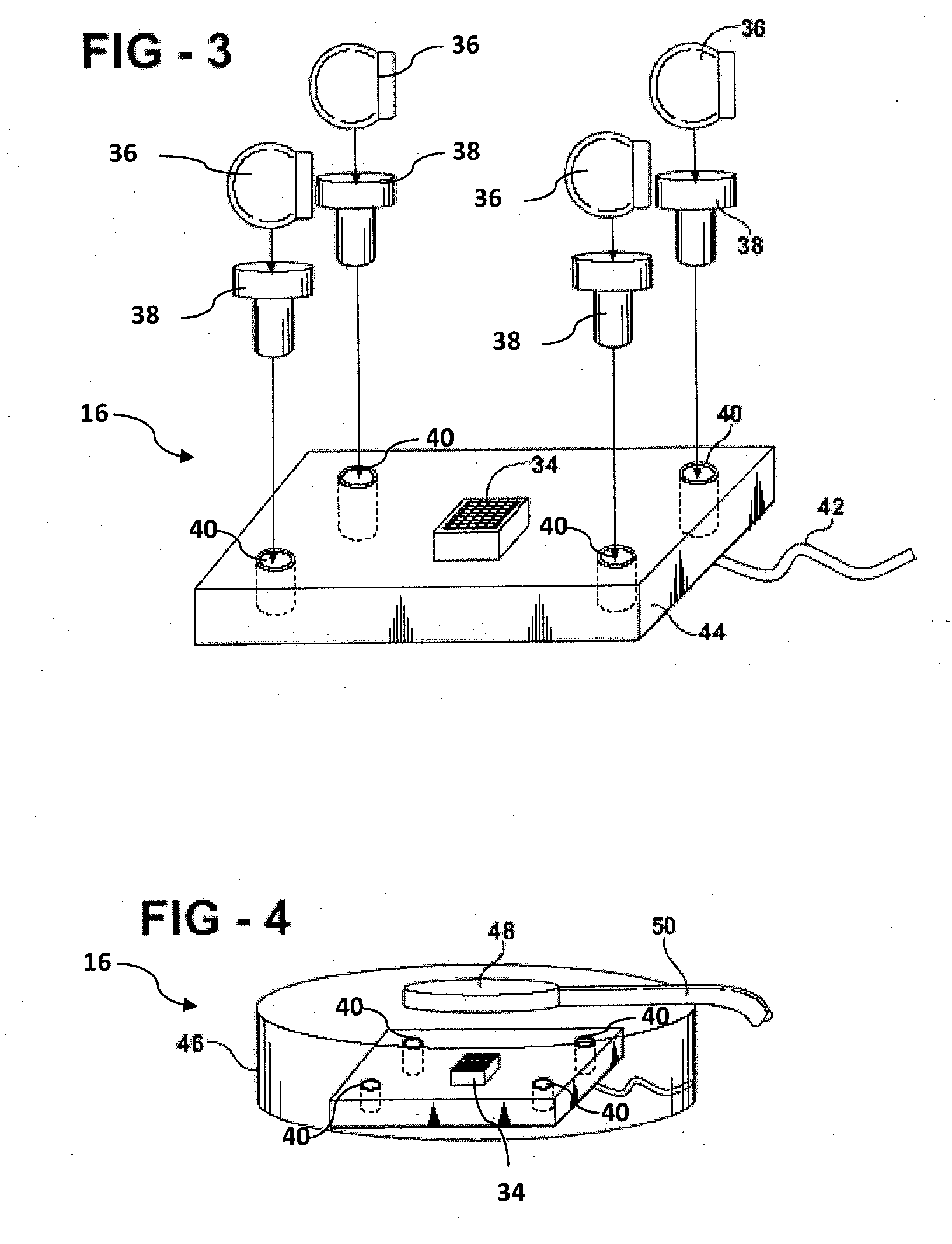External system for robotic accuracy enhancement
a technology of robotic accuracy and external system, applied in the field of robotic and equipment accuracy enhancement and methods, can solve the problems of reducing accuracy, and affecting the accuracy of robots during actual work cycles, so as to reduce or eliminate, reduce the cost of motion platforms, and tighten the tolerance of pos
- Summary
- Abstract
- Description
- Claims
- Application Information
AI Technical Summary
Benefits of technology
Problems solved by technology
Method used
Image
Examples
Embodiment Construction
[0036]Referring to the Figures, wherein numerals indicate like or corresponding parts, an inventive system and method for robotic and equipment accuracy enhancement is generally shown at 10 in FIG. 6. The system 10 includes a plurality of multi-axial devices, generally shown at 12 in FIGS. 1 and 2. These multi-axial devices 12, i.e. beacons, are capable of steering a light beam 14, such as a laser, LED, or incoherent source without limiting the scope of the present invention. Typically, the multi-axial device would be a gimbal as shown in FIG. 1, which illustrates a front view of the multi-axial device 12 and FIG. 2, which illustrates a side view of the multi-axial device 12. Those skilled in the art will appreciate that other devices for generating and steering light beams may be used with the present invention without limiting the scope of the present invention. The beacon 12 presents a certain mechanical pointing resolution (the ability to physically point the beam to a commanded...
PUM
 Login to View More
Login to View More Abstract
Description
Claims
Application Information
 Login to View More
Login to View More - R&D
- Intellectual Property
- Life Sciences
- Materials
- Tech Scout
- Unparalleled Data Quality
- Higher Quality Content
- 60% Fewer Hallucinations
Browse by: Latest US Patents, China's latest patents, Technical Efficacy Thesaurus, Application Domain, Technology Topic, Popular Technical Reports.
© 2025 PatSnap. All rights reserved.Legal|Privacy policy|Modern Slavery Act Transparency Statement|Sitemap|About US| Contact US: help@patsnap.com



